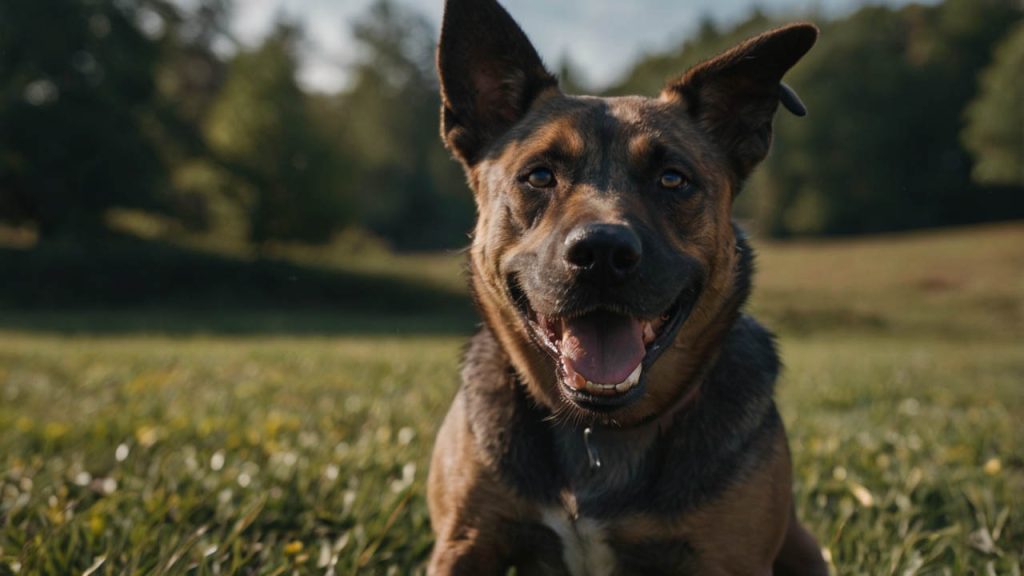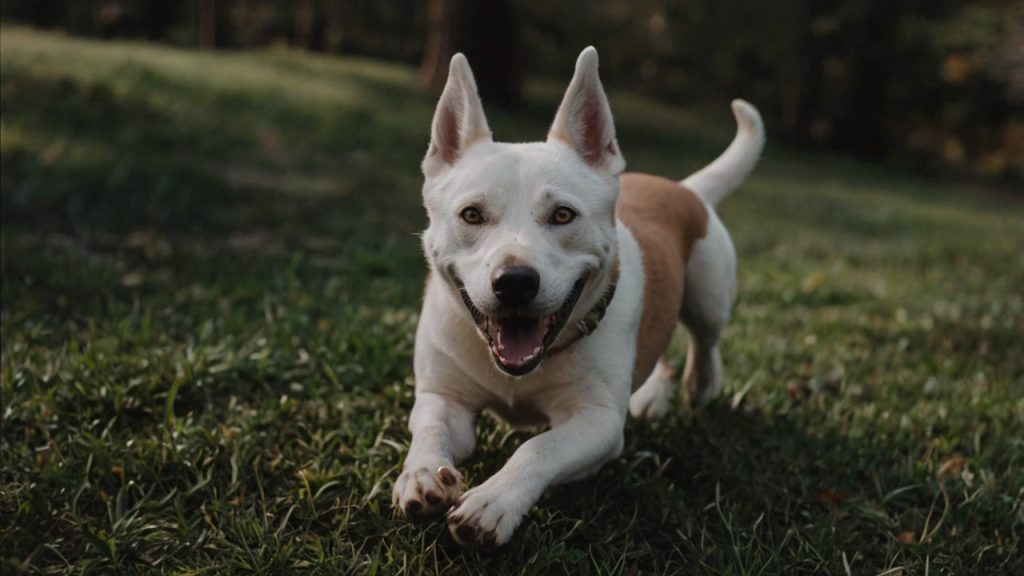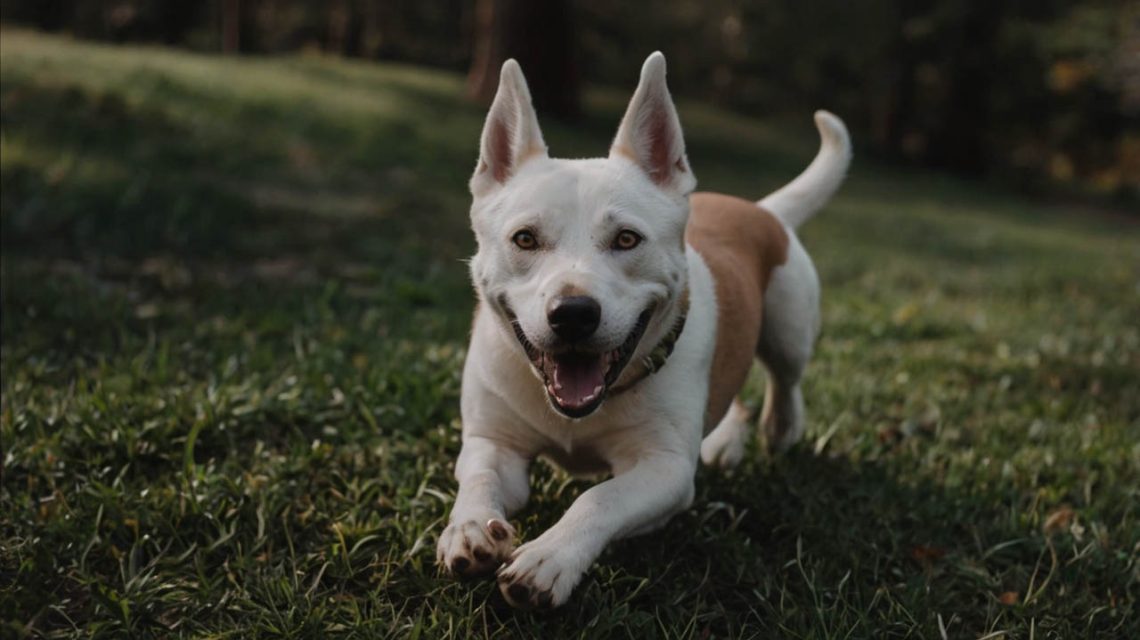Introduction: Preventing Dog Biting Through Effective Training
Learning how to train a dog not to bite is essential for every dog owner, as this fundamental skill ensures safety for both your family and the community while strengthening the human-canine bond. According to the American Veterinary Medical Association, approximately 4.5 million dog bites occur annually in the United States, with children being the most frequent victims. Moreover, research from behavioral specialists indicates that proper bite inhibition training during puppyhood can prevent 90% of serious biting incidents in adult dogs.
The importance of understanding how to train a dog not to bite extends beyond simple obedience training to encompass socialization, communication, and trust-building between dogs and humans. Studies published in the Journal of Applied Animal Behavior Science demonstrate that dogs who receive consistent bite inhibition training during their critical socialization period (3-14 weeks) develop better impulse control and emotional regulation throughout their lives. Furthermore, addressing biting behavior early prevents escalation into aggression that could result in rehoming, legal issues, or euthanasia.
Successfully implementing strategies to prevent biting requires understanding canine psychology, recognizing warning signs, and applying age-appropriate training techniques consistently. While puppies naturally explore their world through mouthing and play biting, teaching appropriate boundaries ensures these behaviors don’t persist into adulthood when they become dangerous. Therefore, this comprehensive guide provides evidence-based training methods, troubleshooting strategies, and professional insights to help you effectively train your dog not to bite at any age.
Why Learning How to Train a Dog Not to Bite Matters
Understanding Natural Biting Behaviors
Before implementing how to train a dog not to bite techniques, recognizing why dogs bite helps address root causes effectively. Puppies naturally use their mouths to explore environments, play with littermates, and communicate needs. Subsequently, this normal developmental behavior teaches bite inhibition through feedback from mothers and siblings who yelp or cease play when bitten too hard.
Fear represents the most common trigger for biting in adult dogs, accounting for approximately 60% of bite incidents. Dogs may bite when feeling cornered, threatened, or unable to escape perceived danger. Research indicates that fear-based biting often results from inadequate socialization, traumatic experiences, or genetic predisposition to anxiety.
Resource guarding, territorial behavior, and pain-induced aggression constitute other primary biting triggers. Dogs may bite to protect food, toys, or sleeping areas from perceived threats. Additionally, medical conditions causing pain can trigger defensive biting even in previously gentle dogs, highlighting the importance of regular veterinary care alongside behavioral training.

Consequences of Untrained Biting Behavior
Understanding the serious implications reinforces why how to train a dog not to bite training proves crucial. Legal consequences vary by jurisdiction but may include mandatory euthanasia for dogs involved in serious attacks, substantial financial liability for medical costs, and criminal charges for owners in severe cases. Insurance companies often refuse coverage or cancel policies after biting incidents.
Emotional trauma affects both victims and dog owners long after physical wounds heal. Children bitten by dogs frequently develop lasting fears that impact their relationships with animals. Furthermore, owners experience guilt, stress, and grief, particularly if their beloved pet must be rehomed or euthanized due to biting behavior.
Social isolation often results from owning a dog with biting tendencies. Friends and family may avoid visits, limiting social interactions and support systems. Moreover, simple activities like walks or veterinary visits become stressful ordeals, diminishing quality of life for both dogs and owners.
How to Train a Dog Not to Bite: Puppy Foundation
Early Bite Inhibition Training
Starting how to train a dog not to bite training during puppyhood establishes crucial foundations for lifelong behavior. Between 3-12 weeks, puppies learn bite inhibition primarily through interactions with littermates and mothers. When puppies bite too hard during play, siblings yelp and stop playing, teaching that gentle mouth use maintains social interaction.
Continuing this education after bringing puppies home requires consistent responses to biting. When puppies bite during play, immediately yelp loudly and withdraw attention for 10-20 seconds. This mimics natural canine communication and teaches that biting ends fun activities. Research shows puppies receiving consistent bite inhibition training develop softer mouths within 2-3 weeks.
Redirection techniques complement inhibition training effectively. Keep appropriate chew toys readily available, immediately substituting them when puppies attempt to bite hands or clothing. Subsequently, praise enthusiastic toy engagement to reinforce appropriate outlet choices for natural mouthing instincts.
Socialization and Exposure
Comprehensive socialization forms essential components of how to train a dog not to bite protocols. Exposing puppies to diverse people, animals, environments, and experiences during the critical period (3-14 weeks) reduces fear-based reactivity later. Studies demonstrate that well-socialized puppies show 70% fewer aggressive behaviors as adults.
Positive associations with handling prevent defensive biting during grooming or veterinary care. Gently touch paws, ears, mouths, and tails while providing treats, teaching puppies that human touch predicts good things. Furthermore, practice restraint exercises gradually, rewarding calm acceptance of brief holding.
Controlled interactions with children require special attention when teaching bite inhibition. Supervise all child-dog interactions, teaching both species appropriate behavior simultaneously. Children must learn to avoid rough play, sudden movements, and disturbing eating or sleeping dogs, while puppies learn gentle interaction through consistent training.
How to Train a Dog Not to Bite: Adult Dog Strategies
Addressing Existing Biting Behaviors
Implementing how to train a dog not to bite techniques with adult dogs requires different approaches than puppy training. First, identify specific triggers through careful observation and documentation. Note circumstances surrounding biting attempts including time, location, preceding events, and target individuals. This information reveals patterns essential for developing targeted intervention strategies.
Management prevents rehearsal of biting behaviors while training progresses. Use baby gates, crates, or leashes to control interactions and prevent situations triggering biting. Subsequently, this creates safe environments for gradual behavior modification without risking incidents that could reinforce aggressive responses.
Counter-conditioning changes emotional responses to previously triggering stimuli. Pair triggers with highly valued rewards at sub-threshold distances where dogs notice stimuli without reacting aggressively. Gradually decrease distance as dogs develop positive associations, replacing fear or aggression with anticipation of rewards.
Desensitization Protocols
Systematic desensitization forms core components of how to train a dog not to bite programs for reactive dogs. Create detailed hierarchies ranking triggers from least to most provocative. Begin exposure at levels causing mild interest without aggression, rewarding calm behavior generously.
Progress gradually through hierarchy levels only when dogs consistently remain calm at current stages. Rushing risks sensitization, potentially worsening aggressive responses. Research indicates successful desensitization typically requires 8-12 weeks of consistent daily practice for moderate cases.
Professional guidance often proves invaluable for implementing safe, effective desensitization. Certified dog behavior consultants or veterinary behaviorists provide expertise identifying subtle stress signals and adjusting protocols appropriately. Moreover, they ensure safety protocols protect all involved parties during training.
Essential Techniques: How to Train a Dog Not to Bite
Positive Reinforcement Methods
Positive reinforcement represents the most effective approach when learning how to train a dog not to bite according to modern behavioral science. Rewarding desired behaviors increases their frequency while building trust between dogs and handlers. Studies consistently demonstrate that positive reinforcement training produces faster, more reliable results than punishment-based methods.
Timing proves crucial for effective reinforcement. Deliver rewards within 1-3 seconds of desired behaviors to create clear associations. Use markers like clickers or verbal cues (“yes!”) to precisely identify correct responses, bridging gaps between behaviors and reward delivery.
Variable reinforcement schedules maintain behaviors long-term once established. Initially reward every correct response, gradually transitioning to intermittent reinforcement. This prevents dependency on constant rewards while maintaining behavior strength through unpredictability.
Teaching Alternative Behaviors
Replacement behaviors provide appropriate outlets when implementing how to train a dog not to bite training. Teaching “gentle” or “easy” cues helps dogs moderate jaw pressure during necessary mouth contact. Practice with treats, gradually requiring softer takes before releasing rewards.
Impulse control exercises reduce likelihood of reactive biting. “Leave it” and “drop it” commands create immediate response options preventing escalation. Additionally, “wait” and “stay” build general self-control transferring across various situations.
Calming protocols offer alternatives to aggressive responses. Teaching “settle” or “relax” on cue provides incompatible behaviors with biting. Furthermore, these skills help dogs self-regulate during stressful situations, reducing overall reactivity.

How to Train a Dog Not to Bite During Play
Managing Play Arousal
Controlling excitement levels during play proves essential when teaching how to train a dog not to bite effectively. Monitor arousal signs including dilated pupils, rapid panting, and increasingly rough play. Implement regular breaks before dogs become overstimulated, as high arousal impairs impulse control and learning.
Structured play sessions teach appropriate interaction rules. Use consistent start and stop cues, immediately ending games if teeth contact skin. Subsequently, resume play only after dogs calm down, reinforcing that gentle play continues while rough play stops.
Appropriate toy selection reduces mouthing redirection to humans. Long tug toys maintain distance between hands and mouths during interactive play. Furthermore, rotating toys maintains novelty and engagement, preventing boredom-driven inappropriate mouthing.
Teaching Bite Inhibition Through Games
Controlled tug-of-war teaches how to train a dog not to bite through rule-based play. Establish clear rules: teeth touching skin ends games immediately, “drop it” commands must be obeyed instantly, and humans always initiate and end sessions. This structured approach teaches impulse control while satisfying natural playing instincts.
Hide-and-seek games redirect predatory instincts appropriately. Teaching dogs to find hidden toys or treats channels hunting behaviors toward acceptable targets. Moreover, these mentally stimulating activities tire dogs more effectively than physical exercise alone.
Fetch variations incorporate impulse control training naturally. Require “wait” commands before throwing, “drop” commands for release, and calm behavior before subsequent throws. These rules transform simple games into comprehensive training opportunities.
Special Considerations in Bite Prevention Training
How to Train a Dog Not to Bite: Breed-Specific Factors
Certain breeds require modified approaches when learning how to train a dog not to bite due to genetic predispositions. Herding breeds may nip at heels instinctively, requiring redirection to appropriate herding toys or activities. Subsequently, providing breed-appropriate outlets prevents frustration-based biting.
Terriers bred for vermin control often exhibit stronger prey drives affecting bite inhibition. These dogs benefit from increased impulse control training and carefully managed toy play. Furthermore, avoiding games triggering prey sequences reduces practice of biting behaviors.
Guardian breeds may show increased territorial aggression requiring specialized socialization. Early, extensive exposure to various people in different contexts prevents inappropriate protective behaviors. Additionally, teaching clear discrimination between actual threats and normal activities proves essential.
Age-Related Training Adjustments
Senior dogs need modified how to train a dog not to bite approaches accommodating physical and cognitive changes. Pain from arthritis or dental disease may trigger previously absent biting behaviors. Veterinary evaluation and pain management often resolve these issues without extensive behavioral intervention.
Adolescent dogs (6-18 months) often regress in trained behaviors including bite inhibition. Consistent reinforcement of early training prevents permanent behavior problems. Moreover, increased exercise and mental stimulation help manage adolescent energy contributing to inappropriate mouthing.
Rescue dogs with unknown histories require careful assessment before implementing training protocols. Conservative approaches assuming no prior training often prove most successful. Additionally, building trust through positive interactions precedes formal training for traumatized dogs.
Professional Intervention Strategies
When to Seek Expert Help
Recognizing when professional assistance becomes necessary ensures safety when addressing how to train a dog not to bite issues. Any bite breaking skin warrants immediate professional consultation, as these incidents indicate serious aggression requiring expert intervention. Furthermore, escalating aggression despite consistent training suggests underlying issues beyond typical training scope.
Certified professionals provide specialized expertise for complex cases. Veterinary behaviorists combine medical knowledge with behavioral expertise, identifying potential medical contributors to aggression. Additionally, they can prescribe medications supporting behavioral modification when appropriate.
Board-certified behavior consultants offer intensive behavior modification programs. These professionals develop customized protocols addressing specific triggers and circumstances. Moreover, they provide ongoing support adjusting strategies based on progress and challenges.
Working with Professionals
Maximizing professional consultation effectiveness requires preparation and commitment. Document biting incidents thoroughly including triggers, warning signs, and outcomes. Subsequently, provide complete medical histories including medications, diet changes, and recent stressors.
Consistent implementation of professional recommendations determines success. Follow protocols exactly as prescribed, maintaining detailed progress logs. Furthermore, communicate regularly with professionals about challenges or concerns rather than abandoning protocols prematurely.
Family involvement ensures consistent training across all interactions. Everyone must understand and implement protocols identically, as inconsistency undermines progress. Additionally, children require special instruction on safe interaction during training periods.
Preventing Biting Through Environmental Management
Creating Safe Spaces
Environmental modification supports how to train a dog not to bite training by preventing rehearsal of aggressive behaviors. Designate quiet retreat areas where dogs can decompress without disturbance. These spaces should contain comfortable bedding, water, and favorite toys, becoming positive associations with solitude.
Physical barriers prevent unwanted interactions during training phases. Baby gates allow visual contact while maintaining safety during gradual introductions. Furthermore, exercise pens provide controlled interaction spaces for supervised training sessions.
Trigger management reduces stress contributing to aggressive responses. Identify and minimize exposure to known triggers while building coping skills. Additionally, gradual controlled exposure replaces uncontrolled encounters that might provoke biting.
Routine and Predictability
Structured routines reduce anxiety contributing to aggressive behaviors. Consistent feeding, exercise, and training schedules provide predictability reducing stress. Moreover, anxious dogs particularly benefit from knowing what to expect throughout days.
Clear communication through consistent cues prevents misunderstandings triggering defensive responses. Use identical words and gestures for commands across all family members. Furthermore, teaching dogs to request needs appropriately reduces frustration-based biting.
Environmental enrichment addresses boredom contributing to inappropriate behaviors. Puzzle feeders, rotating toys, and scent games provide mental stimulation. Additionally, adequate physical exercise reduces excess energy potentially manifesting as mouthing or biting.
Maintaining Progress Long-Term
Consistency and Reinforcement
Sustaining improvements from how to train a dog not to bite training requires lifelong commitment to consistency. Continue reinforcing appropriate behaviors even after problems resolve, as inconsistent maintenance allows regression. Research indicates that behaviors maintained through variable reinforcement persist longer than those abruptly discontinued.
Regular training refreshers prevent skill deterioration over time. Practice commands weekly, varying contexts and distractions to maintain generalization. Furthermore, incorporating training into daily activities maintains skills without dedicated session requirements.
Monitoring for regression signs allows early intervention before serious problems develop. Watch for increasing mouthiness, resource guarding, or reactivity to previously neutral stimuli. Additionally, address emerging issues immediately rather than hoping they resolve spontaneously.
Adapting to Life Changes
Major transitions may temporarily affect trained behaviors requiring adjusted management. Moving homes, family additions, or schedule changes can trigger stress-related regression. Subsequently, temporarily increasing structure and training during transitions prevents permanent setbacks.
Health changes throughout dogs’ lives may affect behavior requiring modified approaches. Regular veterinary examinations identify developing conditions potentially contributing to aggression. Moreover, adjusting training techniques accommodates physical limitations while maintaining safety.
Continuous education keeps owners informed about evolving training techniques and understanding. Attend workshops, read current literature, and consult professionals periodically for guidance. Furthermore, joining training clubs or online communities provides ongoing support and motivation.
Conclusion: Achieving Lasting Success in Bite Prevention
Learning how to train a dog not to bite requires dedication, consistency, and understanding of canine behavior, but the rewards—a safe, trustworthy companion—justify the effort invested. Throughout this comprehensive guide, you’ve discovered evidence-based techniques for preventing and addressing biting behaviors across all life stages, from puppy bite inhibition through adult behavior modification. The key to success lies in early intervention, positive reinforcement methods, and recognizing when professional help becomes necessary.
Remember that every dog progresses at their own pace when learning bite inhibition, influenced by genetics, early experiences, and individual temperament. Some dogs master gentle mouth habits within weeks, while others require months of patient training to overcome established patterns. Your commitment to consistent, humane training methods will ultimately determine your success in raising a safe, well-adjusted canine companion.
Take action today by assessing your dog’s current biting behaviors and implementing appropriate training strategies from this guide. Start with management to prevent practice of unwanted behaviors, then gradually introduce training exercises suited to your dog’s age and experience level. Most importantly, prioritize safety for all involved—don’t hesitate to seek professional help if you encounter aggressive behaviors beyond your comfort level. Your investment in learning how to train a dog not to bite will result in years of safe, enjoyable companionship with your four-legged friend.


